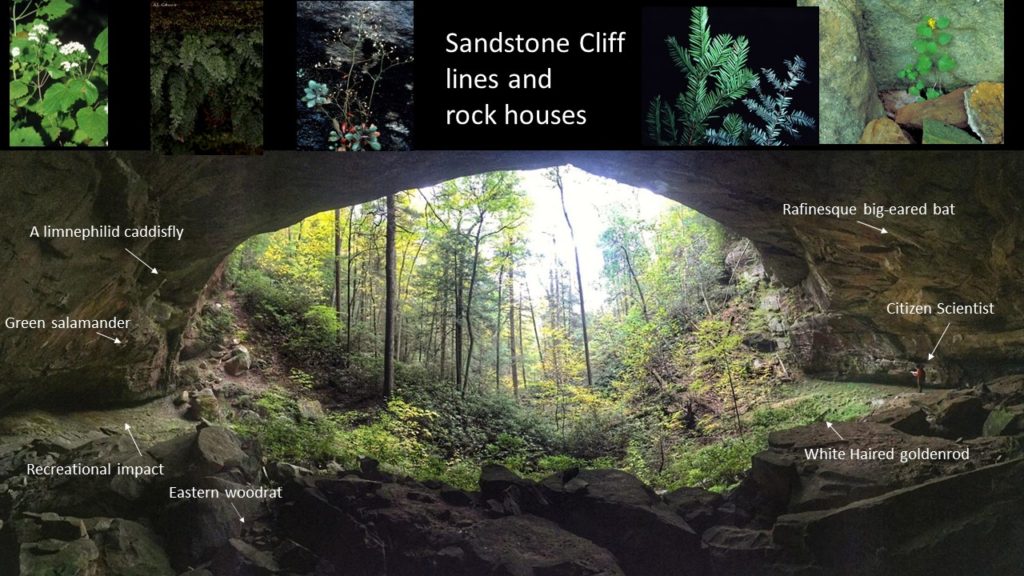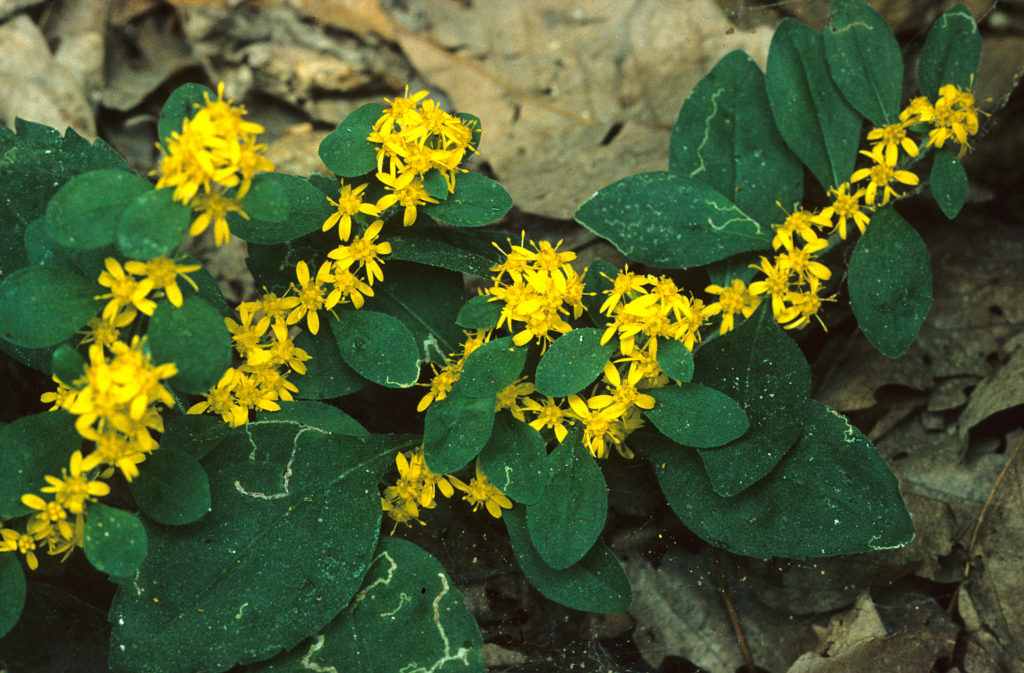Volunteers Needed for Upcoming Sandstone Rockhouse Monitoring Project to help protect native plants, animals and archeological resources

The Office of Kentucky Nature Preserves and U.S. Forest Service are seeking to partner with citizen scientists to monitor culturally and ecologically significant sandstone rockhouses and cliffline communities that occur in the Red River Gorge Geological Area. These communities contain many rare and endemic plants and animal species, as well as archeological resources that need your help! Volunteers must submit an application for review, and will be notified of selection in the fall of 2021. Training will be provided and volunteers will begin to help monitor and conserve their assigned rockhouse in 2022. Time commitment is estimated to be approximately 5 working days throughout the year, as well as email correspondence and other requirements listed below. Groups or individuals are welcome to apply.
Why are sandstone rockhouses and cliffline communities in the Red River Gorge Geological Area significant?
Ecology: Sandstone rockhouses are cave like recesses in sandstone cliffs formed by erosion. Dry by nature, they are almost completely sheltered from precipitation; getting water from windblown rain, waterfalls from above or ground water seepage through the sandstone. Compared to the surrounding conditions of the mixed mesophytic forest, rockhouses are warmer in the winter, cooler in the summer, and have lower evaporation rates and higher humidity. Soils found in rockhouses are mostly low pH sand with high levels of some nutrients from saltpeter earth and prehistoric human activities. Due to these conditions, rockhouses have their own unique flora and fauna that include several rockhouse endemic species. Sandstone rockhouses are home to the Federally Delisted White-haired Goldenrod, a species that only occurs in the RRGGA.

Cultural Heritage:
The structure of the rockhouses naturally provide protection from precipitation,
making them valuable as archeological sites. Artifacts and plant materials decompose in other conditions, but are well preserved in the dry, nitrate-rich soils of rockhouses.
Humans have been utilizing rockhouses for thousands of years, and leaving traces of their lives behind. Approximately 12,000 years ago, Native peoples used them as encampments, locations for special activities, bivouacs, and burial sites. Within the last several centuries, rockhouses have been used as dwellings, barns, campsites, schoolhouses, saltpeter mines, shelters for whiskey stills and more. In addition, faunal and flora remains found in rockhouses have helped archeologists better understand the development of agriculture in eastern North America.

What is the impact of recreation on clifflines and rockhouses?
Clifflines and rockhouses are extremely sensitive to human impacts, yet these locations have seen a continued surge in recreational use. In the last 10 years, visitation to the Red River Gorge Geological Area has increased by almost 40%. There has been extensive documentation of the area on social media, guidebooks, and outdoor websites that have increased visitation of hikers, campers, photographers, and other outdoorspeople. The RRGGA is also one of the most popular climbing destinations in the Eastern United States, therefore the rising popularity of rock climbing and bouldering across the country has led to an influx of visitors wishing to climb at “The Red.”
Increased and prolonged recreational presence in the rockhouse and cliffline communities can cause habitat loss and degradation, erosion, eradication of species, and loss of cultural resources. The growing recreational use has increased the need to monitor cliffline and rockshelter sites that are known to contain populations of rare plant and animal species, and/or heritage resources. The data from the monitoring will be used to ensure that appropriate mitigations are in place to protect these sensitive habitats and significant cultural sites.
How do I get involved?
First, check the list of basic Volunteer Requirements and see if this program is right for you:
Adopt a Rockshelter Program Volunteers must:
1. Have an interest in conserving and protecting biological and cultural resources.
2. Be willing to complete required training provided by the Office of Kentucky Nature Preserves and U.S. Forest Service. Training is being developed by OKNP, USFS and Dan Doursan, and will be provided to volunteers in 2022.
3. Be able to fulfill the time commitment required by the program. Adopting 1 rockshelter carries a 5-day commitment that will include training and site visits.
4. Be able to hike long distances on uneven terrain along designated and user defined trails.
5. Feel comfortable working with, or being willing to learn, a touchscreen tablet for data collection.
6. Be able to remove invasive species.
If the ARP is something you’d like to be involved with, please email naturepreserves@ky.gov to receive an application. OKNP and USFS staff will review all volunteer applications and contact those who have been admitted.
